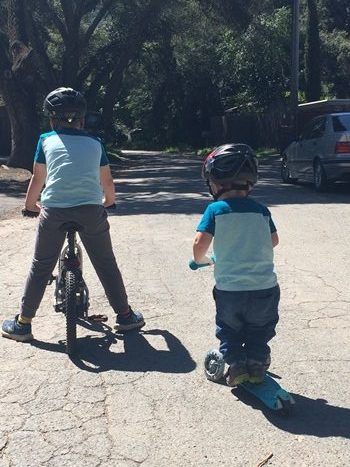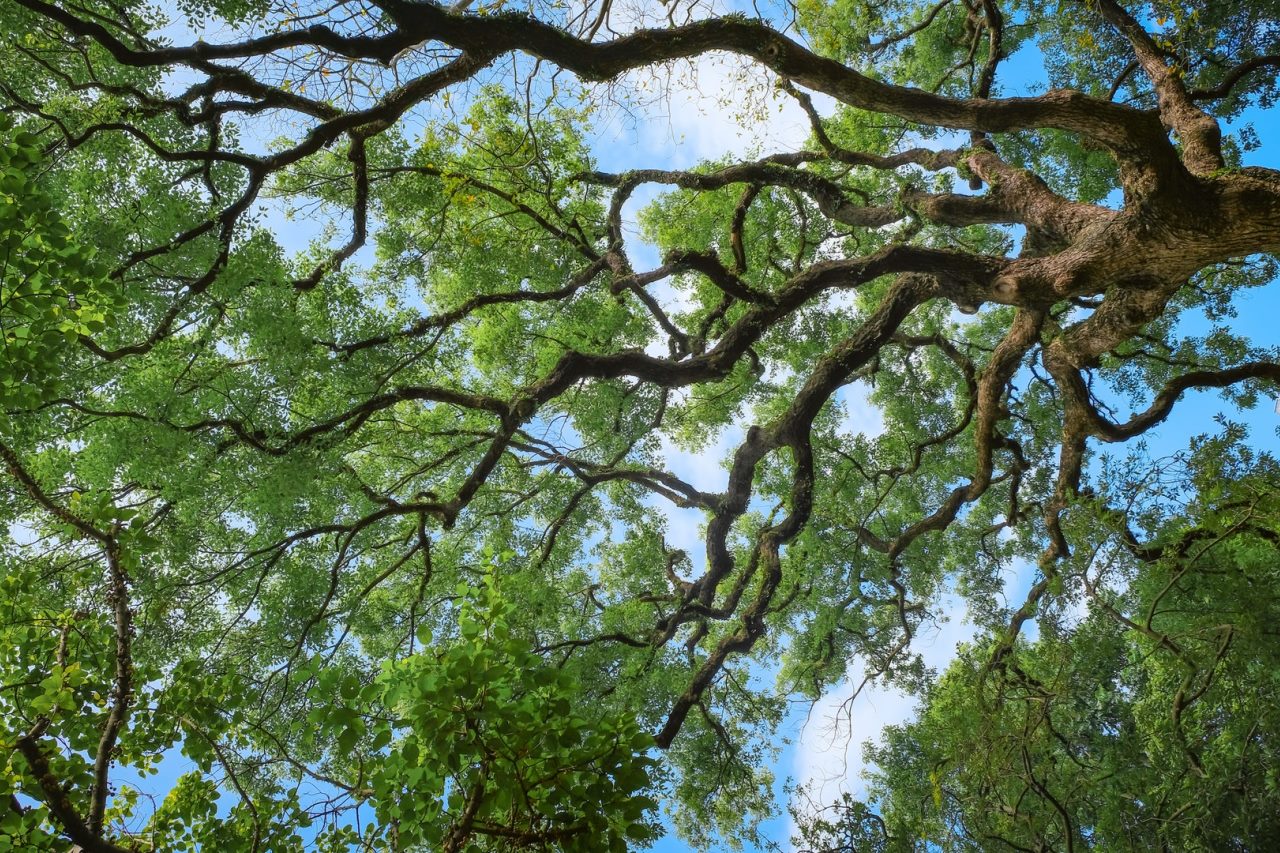by Brynn Kaufman (California)
I am writing this to you on the seventeenth day that I and my family have been isolating ourselves, doing our part to slow the virus that is growing around the globe.
Like I imagine yours has, my life has gone through some rapid changes – my kindergartener is home, there are no playdates for either him or his toddler brother, and my husband is working from home. We are falling into a rhythm, spending time outside playing, listening to raindrops fall from the canopy of oaks that spread across our neighborhood. Chatting with our neighbors from a distance, looking forward to spending time together again. Participating in our church service from our couch, wondering how many others are also doing so in their pajamas.
I found myself irked this week at some spam mail I had been getting. Retailers who were emailing me seemed to either be ignoring unfolding events altogether, or exploiting the anxiety and crunch that many are currently feeling. As I ruminated on this, my thoughts turned to color and color analysis, opening up an internal debate on whether it has a place in a time of crisis.
And this personal experience came to mind:
A Season of Hard
 Almost exactly a year ago, parts of my life flipped upside down. I was launched into a season of hard whose light at the end of the tunnel was at best a pinprick in the darkness. A season of hard that was going to require facing enormous grief, terrible fears, and unspeakable experiences. And it was awful.
Almost exactly a year ago, parts of my life flipped upside down. I was launched into a season of hard whose light at the end of the tunnel was at best a pinprick in the darkness. A season of hard that was going to require facing enormous grief, terrible fears, and unspeakable experiences. And it was awful.
You may have faced a season like this. If so, you know how all-consuming it can be. Your thoughts, your energy, your time are all sucked in by the pull of the matter at hand. I made a conscious, significant effort – while continuing to hack away at the problem – to focus on the innumerable blessings in my life, to cherish and imprint the memories I was making with my young children and family so they wouldn’t be lost to the heavy, oppressive hard.
An Itch
 And as time rolled forward, I felt like I was standing in the surf zone of the beach – I’d get lulls with some serenity and peace to catch my breath before getting slammed again with a new breaker. Some things got easier while others got harder. And through this, I started getting an itch… an itch to create – to paint, to sew, to make something beautiful. And being me – maybe you were wiser – I hope you were wiser – I stuffed that urge down. I called it silly, useless, even ridiculous to be feeling that way at a time like that. And what I didn’t notice, was that as I did, I started getting restless. And then it surged back up, and I stuffed it down even farther. And what I still didn’t notice was that my chest got tighter. Over, and over again I stuffed it down. And I was blind to the fact that my space to breathe deep, calm breaths was disappearing, and I was climbing up the walls of my own body.
And as time rolled forward, I felt like I was standing in the surf zone of the beach – I’d get lulls with some serenity and peace to catch my breath before getting slammed again with a new breaker. Some things got easier while others got harder. And through this, I started getting an itch… an itch to create – to paint, to sew, to make something beautiful. And being me – maybe you were wiser – I hope you were wiser – I stuffed that urge down. I called it silly, useless, even ridiculous to be feeling that way at a time like that. And what I didn’t notice, was that as I did, I started getting restless. And then it surged back up, and I stuffed it down even farther. And what I still didn’t notice was that my chest got tighter. Over, and over again I stuffed it down. And I was blind to the fact that my space to breathe deep, calm breaths was disappearing, and I was climbing up the walls of my own body.
I don’t remember how this topic came up with my therapist, as I vaguely remember demoting it to a “not important enough to talk about with her” status. But, powerful as a subconscious and inner wisdom is, at some point during our meeting it came bubbling, then gushing out. Along with some tears. And in our conversation, I persecuted my need to be creative with all of the arguments I’d used to stuff it down. With the point that there were so many other important things I needed to take care of. With the question of how one could be creative when you were sitting in a pit of grief. With the cynicism that demoted my creative outlets to a status of pointless, frivolous, unnecessary.
Space
 And she held space for me, listening, and then helped me cue in to the underlying beliefs that were driving my thoughts. And helped me question if I really, truly believed that being creative wasn’t of value in times of hardship. And as I slowly realized that the urge to create and be creative was a part of the healing, my body uncaged itself. Space appeared in my torso for my lungs to expand all the way. My shoulders loosened up, and stopped trying to make themselves into earrings. And I felt at peace.
And she held space for me, listening, and then helped me cue in to the underlying beliefs that were driving my thoughts. And helped me question if I really, truly believed that being creative wasn’t of value in times of hardship. And as I slowly realized that the urge to create and be creative was a part of the healing, my body uncaged itself. Space appeared in my torso for my lungs to expand all the way. My shoulders loosened up, and stopped trying to make themselves into earrings. And I felt at peace.
I gained further insight when I was doing some reading at a later date. In his book, The Pocket Guide to The Polyvagal Theory: The Transformative Power of Feeling Safe, researcher Dr. Stephen Porges explains that we can really only be creative if we feel safe. This isn’t safety as we define it in our thoughts – “well I’m home on my couch with a book, not walking in a dark alley so, of course, I’m safe.” Rather, it’s an intuitive, visceral, gut reaction in our body and nervous system. The opposite of safety is defensiveness, when either our fight-or-flight reactions are triggered with resulting anxious and fearful feelings, or our frozen and shutdown reactions are triggered with a resulting sense of numbness, detachment from the world, or hopelessness.
Creativity and Resilience
Our creativity is rooted in higher brain structures that are only online if we aren’t in a state of defensiveness, and this sense of safety also relies on being socially engaged. And what I found even more compelling is that this state of safety is also required for the body and mind to stay regulated, and heal themselves. It’s a circle – remaining socially connected and experiencing creativity and expansiveness require the feeling of safety, but staying socially connected and expressing creativity and expansiveness also feed back into the feeling of safety. And they support our wellness, and resilience.
So, if color is your creative playground, and you start to get that itch to be creative, please join us here. We’ll be here. Planning, hoping, imagining, creating, healing. And dreaming, in color.
Peace and love.



